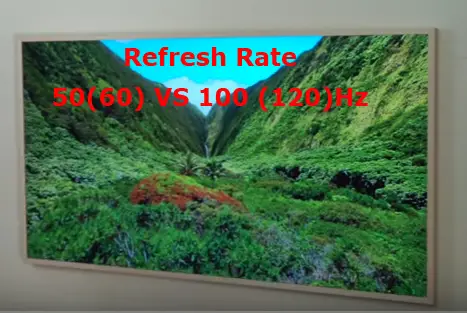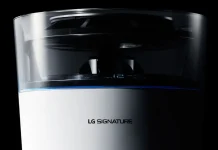What is the difference between a TV with a frequency of 50 vs 60 Hz or 100 мы 120 Hz. These TVs are no different, they are the same. The division 50 / 60Hz or 100/120 is conditional and is used for the convenience of users.
50Hz vs 60Hz TV, 100Hz vs 120Hz
In TVs, despite the many invented parameters that have a value of 200 and up to 4000 units, there is one parameter that really stipulates the capabilities of the TV and this parameter is the frame rate on the TV screen (Refresh Rate).

Refresh Rate what is it
Refresh Rate – This parameter shows how often the TV changes the frames on the screen. This parameter shows the actual frame rate. And this parameter depends on the quality of the installed matrix of the screen in the TV.
But until 2017, it was impossible to transmit video with a frequency of more than 60 Hz to a TV. The standards used at that time stipulated the maximum recording frequency at 60 Hz.
HDMI port standards until 2017 supported the maximum video frequency at 60Hz.
50Hz vs 60Hz TV
But if there is a video with a frequency of 60Hz, then how will it show the TV with a frame rate of 50 per second. Everything is very simple, it will show quite normal, all TVs are designed to display video with a frequency of 60Hz.
Difference Between 50hz and 60hz TV, history why 50hz 60hz began to be applied
On the European continent, at one time, the AC standard was adopted in the electrical network at 50Hz, and in the US 60Hz. The first analogue kinescope TVs used the network frequency to synchronize the image, because it is stable and maintained strictly within a limited range. The time has passed, modern TVs have not used the network frequency for image synchronization for a long time, but the notion of 50Hz for Europe and 60Hz for the US has so deeply penetrated the minds of users that manufacturers continue to use these parameters to denote the frame rate in the TV.
A modern TV will show an image at any frequency up to 60Hz, but the screen matrices have their own parameters, specifying the Refresh Rate parameter at 60 (50) Hz. the manufacturer guarantees the quality of the picture at the proper level.
Difference Between 100hz and 120hz TV
100/120hz this is a reserve for the future since 2017, a new standard of HDMI ports 2.1 has been adopted in which the support for video with a frequency of 120Hz has already been agreed. And this makes it possible to use the TV as a monitor.
There is no difference between TV support of 100 hz or 120 hz. TV manufacturers for Europe indicate support for 100 Hz, and if the TV is made for the United States indicate support for 120 Hz.
Note: in some models of TVs there are modes of increasing the frame rate, which allow creating additional image frames, but as the practice of using TVs has shown, 98% of users do not include these modes because of their uselessness.
Conclusion: Buying a TV with frequency support at 100 (120) Hz. you will get a TV with a better matrix, which will positively affect the quality of the picture.






